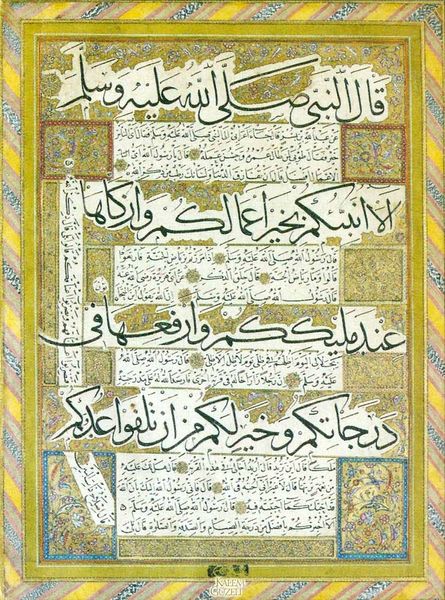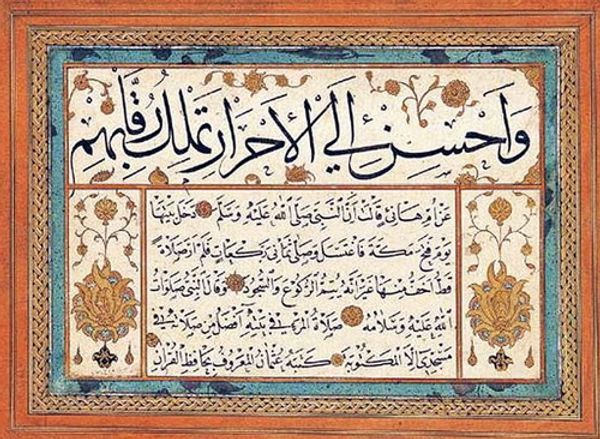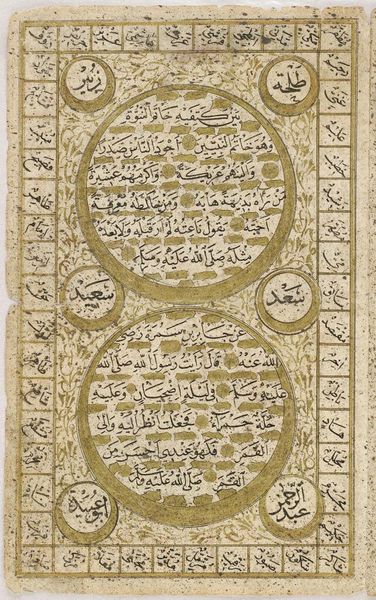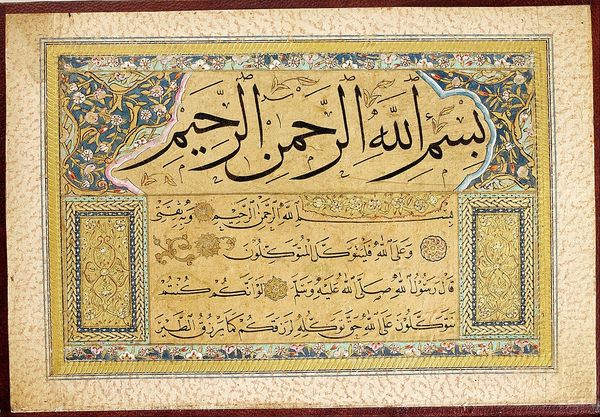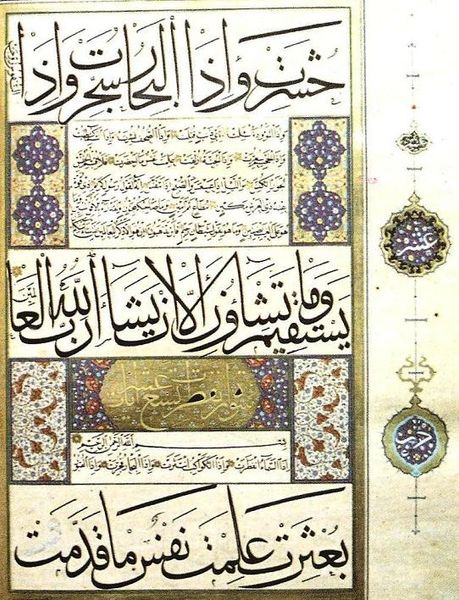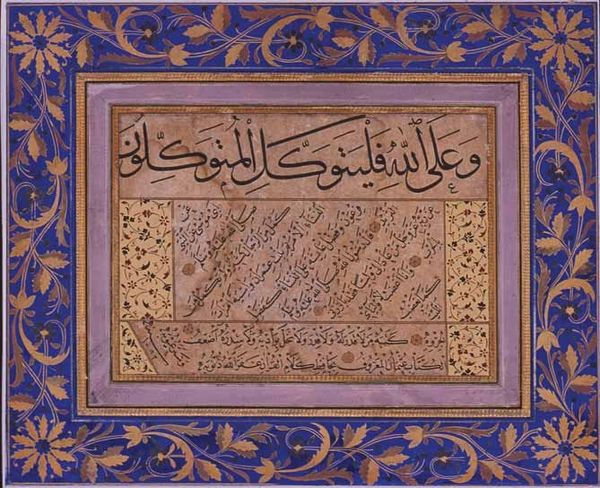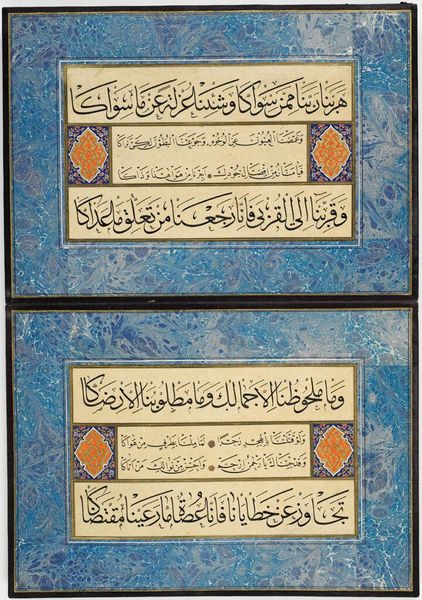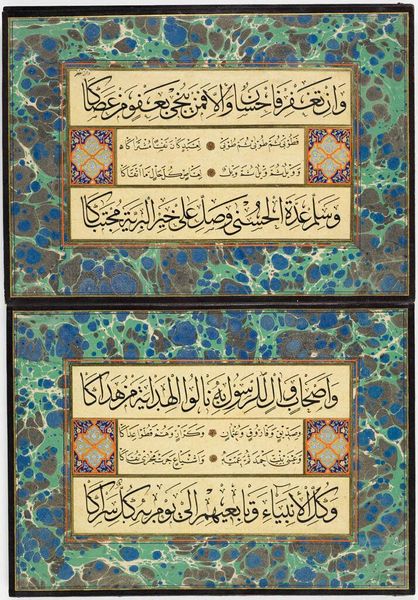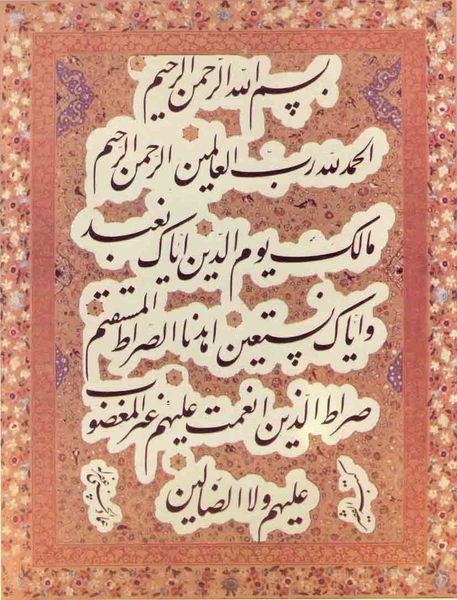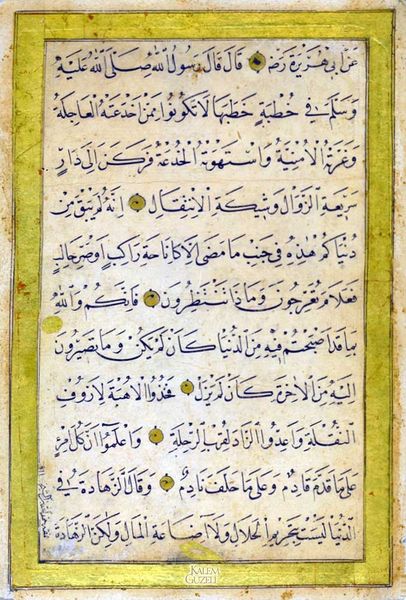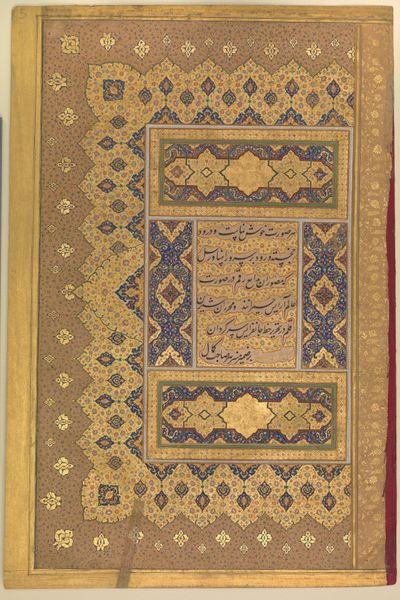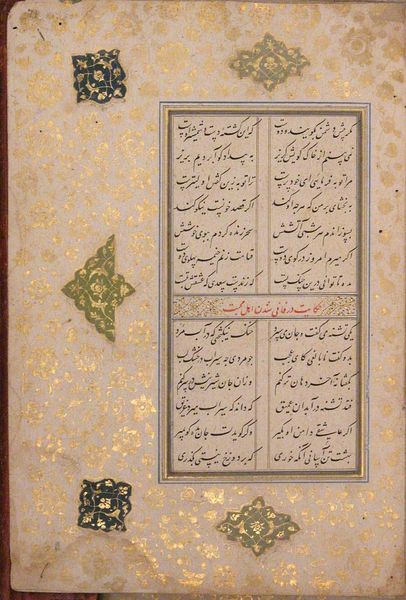
textile, paper, ink
#
pattern heavy
#
natural stone pattern
#
naturalistic pattern
#
textile
#
paper
#
pattern design
#
ink
#
geometric
#
vertical pattern
#
intricate pattern
#
pattern repetition
#
islamic-art
#
textile design
#
layered pattern
#
miniature
#
pattern work
#
calligraphy
Copyright: Public domain
Editor: Here we have "Serlevha - Bakara Suresi'nin ilk 4 ayeti" by Sheikh Hamdullah. It's made with ink on paper and textile. All the patterns really create an interesting visual tension around the calligraphy itself. What catches your eye in this piece? Curator: What strikes me is the interplay between the sacred text and the elaborate decoration surrounding it. Let's consider the labor involved: the sourcing of pigments, the preparation of the paper, the training required to master such intricate calligraphy and illumination. Who were these materials made for, and how did this system benefit from or affect that production? Editor: So, it's less about the spiritual message and more about the physical creation of it? Curator: Not entirely. But by focusing on the materiality, we uncover social structures and power dynamics. Islamic art, especially calligraphy, often transcended mere aesthetics, becoming a display of wealth and a reflection of a patron's status. Notice how the ink itself might have been imported. Do you see an element of consumerism in this apparent worship? Editor: I never considered the supply chains! The indigo probably came from very far away… It's odd to think of faith being connected to international trade and even potentially exploitation. Curator: Exactly! By analyzing the materials and the process, we move beyond the surface and question how art serves social and economic systems, which are inseparably yoked. How can a system support religion? Editor: This makes me see this work in a completely different light. The craftsmanship is breathtaking, and I now think how it reflects the economic and social aspects that may come across as simple devotion. Curator: Indeed. Focusing on materials makes this object more complex by illustrating networks of labor and economies, challenging this traditional understanding of “Islamic art.”
Comments
No comments
Be the first to comment and join the conversation on the ultimate creative platform.
